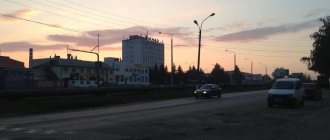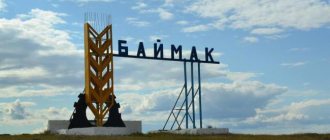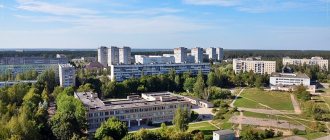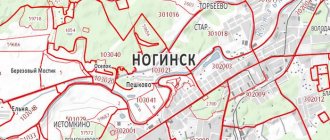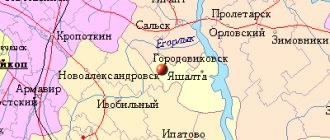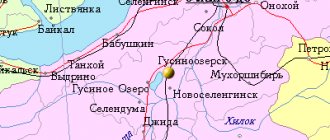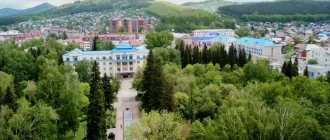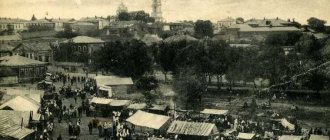This toponym has other meanings, see Kozlovka.
| City Kozlovka Kuslavkka Coat of arms |
| A country | Russia, Russia |
| Subject of the federation | ChuvashiaChuvashia |
| Municipal district | Kozlovsky |
| urban settlement | Kozlovskoe |
| Coordinates | 55°50′00″ n. w. 48°15′00″ E. long / 55.83333° north w. 48.25000° E. d. / 55.83333; 48.25000 (G) [www.openstreetmap.org/?mlat=55.83333&mlon=48.25000&zoom=12 (O)] (Z)Coordinates: 55°50′00″ N. w. 48°15′00″ E. long / 55.83333° north w. 48.25000° E. d. / 55.83333; 48.25000 (G) [www.openstreetmap.org/?mlat=55.83333&mlon=48.25000&zoom=12 (O)] (I) |
| Based | in 1671 |
| First mention | 1671 |
| City with | 1967 |
| Center height | 70 |
| Population | ↘9195[1] people (2016) |
| Names of residents | kozlovchane, kozlovchanin, kozlovka |
| Timezone | UTC+3 |
| Telephone code | +7 83534 |
| Postcode | 429430 |
| Vehicle code | 21, 121 |
| OKATO code | [classif.spb.ru/classificators/view/okt.php?st=A&kr=1&kod=97219501000 97 219 501 000] |
| Official site | [gov.cap.ru/main.asp?govid=372 .ru/main.asp?govid=372] |
| Kozlovka Moscow |
| Cheboksary Kozlovka |
K: Settlements founded in 1671
Kozlovka
(Chuvash. Kuslavkka) is a city in Chuvashia, Russia. The administrative center of the Kozlovsky district and the Kozlovsky urban settlement.
Population - 9195[1] people. (2016).
Geography
The city is located 97 km along the M-7 road towards Kazan from Cheboksary and has a very advantageous geographical position, which is determined by:
- position on the right bank of the Volga River, where the borders of three republics meet: Chuvashia, Mari El and Tatarstan;
- passing the Kazan-Nizhny Novgorod federal highway 9 km from the city;
- the presence of a crossing along the Volga through the pier in Kozlovka
; - the presence of building materials (clay, lime, dolomite).
* * *
State employees feel relatively good in Kozlovka. Employees of small and medium-sized businesses envy them in their own way - and not only because of their salaries.
We talked for a long time with Vladimir Nikolaevich Fomin, the head physician of the district hospital, - nurse Gordeeva, mentioned at the beginning of the article, several times enthusiastically called him the second Vinogradov (he himself does not agree with this - he says that Vinogradov was an aristocrat of spirit and there will be no more like him). The surgeon Fomin and his wife came here for many years on assignment, defended their dissertation, became an Honored Doctor of the Republic, and built a house. And he writes books.
This is guild local history, essays on the history of regional medicine, lives of doctors - exciting reading, where separated lovers meet, repressed doctors return, and in villages where Ilyich’s light bulb has not yet reached, high-class operations are carried out.
Fomin will not leave here anywhere. Now new equipment has arrived, the long-awaited ophthalmologist and neurologist will appear in the fall (they were lured by housing) - there are prospects.
“The zemstvo doctor should live in his own house,” he said, seeing me off. The house is really nice.
If there are houses, there will also be zemstvo intelligentsia? Don't know. But for now, for now... The co-author of many of Fomin’s books is the mentioned journalist Danilov. Writes poems. He served in the Airborne Forces, and after demobilization he worked at the Tongashevsky rural school. And he came up with a parachute circle there.
A small rural school is, of course, the very best place for parachute jumping. Peasant children, of course, will not receive planes and helicopters. However, everything turned out this way: children not only fold old parachutes, but also jump - in the Cheboksary flying club, and can even sit at the controls of an airplane. The hardest thing is to find money to book a bus to Cheboksary, but with planes it’s somehow much easier.
Story
Formed on the territory that previously belonged to those founded in the 16th-17th centuries. the village of Bogorodskoye (another name is Belaya Volozhka) and the villages of Kozlovka, Kartsev Pochinok, Komarovka, Verkhniy Kurgan, Nizhny Kurgan, Slobodka and Novorodionovka. After 1861, Kozlovka, which had a large pier, developed rapidly. Before 1781, Bogorodskoye and the named villages belonged to the Sviyazhsky district, after 1781 they were transferred to the Cheboksary district, within which in 1920 they became part of the Chuvash Autonomous Region. Since 1921, Kozlovka became a regional center. Since 1938 it has been a workers' settlement. In 1959, the village of Belovolzhskoye was included in the settlement, in 1965 - the villages of Komarovka, Nizhny Kurgan, Sloboda. On November 20, 1967, Kozlovka received city status.
* * *
- Write - Kozlovka lives the worst in Russia!
This is how an intelligent-looking woman literally screamed, recognizing me as a “journalist from Moscow.” Another supported her.
A man in shorts approached and everyone started talking at once. I heard an ordinary story that brought me to tears: about the death of the van plant - one of the largest in the country, during the war years it produced the U-2, a powerful city-forming enterprise.
Accommodation, clubs, trips - everything is as it should be. As soon as they began to rise after the 90s, orders appeared, a private investor came, and there was no plant; in the general plot it looks like a classic raider takeover.
Before perestroika, 2,500 people worked at the plant, before closure - 800; they extorted months of wages through the courts and the prosecutor’s office; some are still on the labor exchange.
At the plant, however, there are several small enterprises, two hundred workers make plastic Mobifon windows and other nonsense. The rest of the dismissed drink moderately (in Kozlovka, drunkenness is regular, but somehow quiet, with a quiet voice), work small jobs or travel to the capitals for hack work.
Valentina Alekseevna, who was previously the head of the personnel department at the plant, works as an attendant at a hotel, her salary is two thousand rubles. Lyudmila, a pleasant middle-aged lady, also on duty, receives the same amount for her work as a school guard. In the fall, education workers are expected to receive a raise - and Lyudmila, perhaps, will become the urban middle class, earning a salary of 4.5 thousand. And prices for housing and communal services are the same as in Moscow.
But Lyudmila has a different sadness.
— Why is Kozlovka being turned into a village again? We are a city, we are a regional city! The military registration and enlistment office was taken away from us in Urmary, and the postal department was also taken away. To get to the military registration and enlistment office, you have to drive ten kilometers to Tyurlema, where the railway begins, and then take another train - why?
“Wow,” I say. - Hard…
- You see, it’s not just hard. - She was looking for a word. - This is terribly humiliating!
The tax office and energy sales were also taken away from Kozlovka. Due to summons or any misunderstandings with bills, Kozlov residents travel even further, to a city with the incredible name Tsivilsk (from the Tsivil River): fifty kilometers, an hour by bus, a ticket - fifty rubles. For a medical book - also to Tsivilsk, and more than once.
This ruralization (de-urbanization) worries the residents of Kozlov no less than the search for income. Kozlovka became a city exactly forty years ago, in 1967 - the most important milestone in its biography! The world learned about the village that belonged to the former Vyatka governor Zheltukhin, “where a lot of grain is loaded and many barns are built,” from Radishchev’s “Notes of a Travel from Siberia” - in 1797.
Alexander Nikolaevich stayed here and about (Chuvash and Cheremis) they deceive; also recorded prices for sterlet.
In the 19th century, the Kozlov Fair thundered - one of the largest in the Volga region.
And since 1938, Kozlovka industrialized, began to proudly be called a workers’ village, rose to the rank of a city - and here you are, the chief executives are being taken away!
No wonder the city is sad.
City coat of arms
The city's coat of arms was approved in June 2001 by the district meeting of deputies. The author of the coat of arms is local historian N.G. Zaitsev.
“Coat of arms of the city of Kozlovka
is its official symbol.
It is a heraldic shield bordered with gold, the upper part of which is identical in shape to the Coat of Arms of the Chuvash Republic, which means the geographical location of the city of Kozlovka on the territory of Chuvashia. In the middle of the heraldic shield, the relief of the location of the city of Kozlovka
and the year of formation of the settlement of
Kozlovka
in green - 1671. On a blue background, leaves are depicted in a closed circle, symbolizing the woodworking industry, part of a gear is a symbol of mechanization and the development of industrial production. In the middle of the circle, the white silhouette of a hydrofoil motor ship is a symbol of the dynamic development of social processes in the city. On both sides of the circle there are fish depicted, symbolizing one of the main crafts of the inhabitants of Kozlovka, both in ancient times and in the present day. In the lower part on a dark blue background, indicating the location of the city on the Volga River, there is an inscription in gold letters “Kozlovka”
* * *
Who can live well in Kozlovka?
It's good to live in peace.
The only truly smug person I met off the beach was a young, handsome 33-year-old taxi driver with a richly tattooed shoulder. On the way to Cheboksary he admitted that he really liked living in Kozlovka.
He works as a controller in the Sviyazhsk maximum security colony, 30 kilometers from Kozlovka. Secondary education, recently graduated from technical school, good job - within three days. The wife also works in the colony, but in a local, general-regime women's enterprise - the famous enterprise YUL-34/5 with a successful sewing production. And his mother also worked all her life in the Sviyazhsk colony - as a salesperson in a prison stall. Dear, one might say, labor dynasty.
In addition, he works part-time as a taxi driver in his hometown, taking citizens either to Cheboksary, or even to Kazan, sometimes to Moscow (10 rubles per kilometer is a firm rate, and corporate morals are harsh: when one took an extra two hundred from a client, his comrades gave in the face, and the client was refunded the overpayment).
Two salaries plus income from a taxi - that’s about thirty thousand; and this is no longer the middle class, but the real urban bourgeoisie. We bought an apartment - for now a one-room apartment (he emphasizes “for now”), 350 thousand rubles, and not on credit. Last year we went to Sochi. He, however, does not rule out that in three years, when he retires, in about three years, perhaps he will think something like that, perhaps other areas will open up to him, painfully tormented by the moon, but now? - excuse me.
As befits someone who “fits into the market,” he condemns local losers: a man with hands and brains will always make money. He changes the rap to some kind of “Nizhny Novgorod rock”, we are driving along an excellent road, the sun is everywhere, life is good. And I remembered one of the Kozlov beliefs - in the local gorge called Dunkina Gap, a rich church treasure is buried. It was possible to find it only by lighting one’s way with a candle made of human fat: where the candle goes out, there is the treasure. Kozlov residents teased the police morgue workers and asked for a small favor - to throw some corpse fat. I wanted to ask the Vokhrovets if there was still a demand for candles, but I changed my mind. Everyone's light sources are different.
Industry
The largest industrial enterprise in the city was the Kozlovsky van plant (KKAF). Currently, the territory of the plant is divided between several commercial enterprises, and the largest part, owned by Kozlovsky Van Plant LLC, went through bankruptcy proceedings in 2011 and was liquidated.
Food industry enterprises - a bakery (undergoing liquidation), a creamery, 2 fish processing enterprises.
There is also a clothing factory and a metal products plant (it was completely liquidated)
Nature
Kozlovsky district occupies the northern part of the Volga Upland. The relief is gently hilly, strongly dissected by ravines and river valleys. The ravines have a cutting depth of up to 35 m and a length of 10–12 km.
Among the mineral resources, there are deposits of peat, which are used in agriculture to fertilize fields. Three small deposits of carbonate rocks have been developed in detail: Kurochkinskoye, Kozlovskoye 1 and Kozlovskoye 2 (Slobodskoye). For the production of bricks, loams and clays of the Kozlovskoye deposit, located 0.5 km from the village of Belovolzhskoye, are being developed. The Kozlovsky region is considered promising in terms of identifying oil deposits, but no commercial oil has been found in the exploration wells drilled.
The climate of the area is moderate continental with long cold winters and warm, sometimes hot summers. The average temperature in January is −13 °C, in July 18.6 °C. The absolute minimum temperature reached −44 °C, the absolute maximum reached 46 °C. During the year, the amount of moisture deposited is 513 mm.
The hydro resources of the Kozlovsky district are represented by a 30-kilometer section of the Volga Kuibyshev reservoir and the lower reaches of the Anish River. The right bank of the reservoir is high, not flooded, except at the mouth of the Anish. The width of the reservoir in this area is 2-4 km, depth - 6-8 m. The Anish River flows through the territory of the region and flows into the Kuibyshev reservoir.
Most of the territory is occupied by soddy-slightly podzolic soils located in the eastern half of the region. The western half of the region is dominated by typically gray forest soils favorable for agriculture. In the northeastern part there are small areas of rich chernozems. A complex of sod-floodplain alluvial soils is widespread along the river valleys.
Vegetation is mainly agricultural crops, occupying vast fields. Forests are represented along the Volga River. The largest forest areas are 2: Tyurleminsky and Toganashevsky. Forests have water protection and erosion significance. Kozlovsky district is one of the least forested in the republic, its forest cover is 6.0%. After the 50s of the 20th century, shelterbelts were created in the area, mainly birch and oak. To stop the growing ravines, pine and linden were used. Forest-forming species of natural origin are oak (over 80% of the forested area), as well as aspen, linden, alder, and pine. All forests in the area have protective and recreational value. Today, there is a significant amount of designated land overgrown with self-seeded birch and pine. In addition to fields and forests, the vegetation is represented by meadows and individual areas of steppes.
Culture
In the city there are 3 secondary schools, an evening school for working youth, a boarding school transformed into an orphanage since May 25, 2006, a research and educational center of the Chuvash State University, where there are economic and law faculties and a lyceum, children's music, art, sports schools, 4 libraries, a cinema, a House of Culture, the House-Museum of N. I. Lobachevsky. The printing house publishes newspapers in Russian and Chuvash languages “Znamya” and “Yalav”. Also, since 2002, a lyceum was formed (with the support of the Chuvash State University named after Ulyanov) (already disbanded).
Municipal-territorial structure
Since 2004, there have been 68 settlements in the Kozlovsky district, consisting of one urban and nine rural settlements:
| № | Urban and rural settlements | Administrative center | Number of settlements | Population | Area, km2 |
| 1 | Kozlovskoe urban settlement | Kozlovka city | 4 | ↘8626[2] | 50,76[1] |
| 2 | Andreevo-Bazarskoe rural settlement | Andreevo-Bazary village | 12 | ↘934[2] | 55,62[1] |
| 3 | Attikovskoe rural settlement | Attikovo village | 10 | ↘857[2] | 56,30[1] |
| 4 | Baygulovskoe rural settlement | village of Baygulovo | 2 | ↘728[2] | 30,42[1] |
| 5 | Emetkinskoe rural settlement | Emetkino village | 9 | ↘925[2] | 41,72[1] |
| 6 | Karamyshevskoe rural settlement | Karamyshevo village | 7 | ↘1572[2] | 51,08[1] |
| 7 | Karachevskoye rural settlement | Ilebary village | 9 | ↘689[2] | 37,58[1] |
| 8 | Soldybaevskoe rural settlement | Soldybaevo village | 4 | ↘935[2] | 69,03[1] |
| 9 | Tyurleminskoye rural settlement | Türlema railway station | 7 | ↘1873[2] | 80,92[1] |
| 10 | Yangildinskoye rural settlement | village of Yangildino | 4 | ↘597[2] | 43,32[1] |
| List of settlements in the region | ||||
| № | Locality | Type | Population | Municipality |
| 1 | Ablyazovo | village | ↗46[20] | Andreevo-Bazarskoe rural settlement |
| 2 | Aidarovo | village | ↘16[20] | Andreevo-Bazarskoe rural settlement |
| 3 | Almenevo | village | ↗171[20] | Yangildinskoye rural settlement |
| 4 | Andreevo-Bazary | village | ↗463[20] | Andreevo-Bazarskoe rural settlement |
| 5 | Attikovo | village | ↗198[20] | Attikovskoe rural settlement |
| 6 | Baigulovo | village | ↗918[20] | Baygulovskoe rural settlement |
| 7 | Baymetevo | village | ↗33[20] | Attikovskoe rural settlement |
| 8 | Balanovo | village | ↗97[20] | Karachevskoye rural settlement |
| 9 | Bigildino | village | ↗62[20] | Karachevskoye rural settlement |
| 10 | Bishevo | village | ↗143[20] | Emetkinskoe rural settlement |
| 11 | Verkhneye Anchikovo | village | ↗45[20] | Attikovskoe rural settlement |
| 12 | Verkhneye Baygulovo | village | ↗112[20] | Baygulovskoe rural settlement |
| 13 | Upper Kurgan | village | ↘44[20] | Kozlovskoe urban settlement |
| 14 | Vorobyovka | village | ↘7[20] | Tyurleminskoye rural settlement |
| 15 | Vorobyovka | traveling | →0[20] | Tyurleminskoye rural settlement |
| 16 | Vurmankasy | village | ↗54[20] | Emetkinskoe rural settlement |
| 17 | Grishkino | village | ↗42[20] | Emetkinskoe rural settlement |
| 18 | Dyatlino | village | ↗431[20] | Soldybaevskoe rural settlement |
| 19 | Emyotkino | village | ↗427[20] | Emetkinskoe rural settlement |
| 20 | Ilebars | village | ↗254[20] | Karachevskoye rural settlement |
| 21 | Kazakovo | village | ↗77[20] | Attikovskoe rural settlement |
| 22 | Kalugino | village | ↗50[20] | Andreevo-Bazarskoe rural settlement |
| 23 | Karamyshevo | village | ↗567[20] | Karamyshevskoe rural settlement |
| 24 | Karachevo | village | ↗129[20] | Karachevskoye rural settlement |
| 25 | Kartluevo | village | ↗533[20] | Karamyshevskoe rural settlement |
| 26 | Kartsev-Pochinok | village | ↗135[20] | Kozlovskoe urban settlement |
| 27 | Katergino | village | ↗62[20] | Emetkinskoe rural settlement |
| 28 | Keeners | village | ↗142[20] | Karamyshevskoe rural settlement |
| 29 | Kozlovka | city | ↘8450[2] | Kozlovskoe urban settlement |
| 30 | Kriushi | village | ↗226[20] | Karamyshevskoe rural settlement |
| 31 | Kudemery | village | ↗103[20] | Andreevo-Bazarskoe rural settlement |
| 32 | Kurochkino | village | ↗151[20] | Tyurleminskoye rural settlement |
| 33 | Lipovo | village | ↗210[20] | Emetkinskoe rural settlement |
| 34 | Maloe Bishevo | village | ↗112[20] | Karachevskoye rural settlement |
| 35 | Maloe Karachevo | village | ↗69[20] | Karachevskoye rural settlement |
| 36 | Martynovo | village | ↗95[20] | Attikovskoe rural settlement |
| 37 | Maslovka | village | ↗54[20] | Yangildinskoye rural settlement |
| 38 | Mozhary | village | ↗363[20] | Karamyshevskoe rural settlement |
| 39 | Murzaevo | village | ↗96[20] | Karamyshevskoe rural settlement |
| 40 | Nizhne Anchikovo | village | ↗69[20] | Attikovskoe rural settlement |
| 41 | New Village | village | ↗55[20] | Emetkinskoe rural settlement |
| 42 | New Tyurlema | village | ↗332[20] | Tyurleminskoye rural settlement |
| 43 | New Shutnerovo | village | ↘114[20] | Andreevo-Bazarskoe rural settlement |
| 44 | Novorodionovka | village | ↗10[20] | Kozlovskoe urban settlement |
| 45 | Olmaluy | village | ↗14[20] | Andreevo-Bazarskoe rural settlement |
| 46 | Osinkino | village | ↗143[20] | Karachevskoye rural settlement |
| 47 | Osinovo | village | ↗170[20] | Emetkinskoe rural settlement |
| 48 | Pizhenkasy | village | ↗102[20] | Andreevo-Bazarskoe rural settlement |
| 49 | Pindikovo | village | ↗307[20] | Soldybaevskoe rural settlement |
| 50 | Reshetnikovo | village | ↗112[20] | Attikovskoe rural settlement |
| 51 | Semenchino | village | ↗169[20] | Yangildinskoye rural settlement |
| 52 | Sirekli | village | ↗67[20] | Emetkinskoe rural settlement |
| 53 | Soldybaevo | village | ↗555[20] | Soldybaevskoe rural settlement |
| 54 | Old Türlema | village | ↗583[20] | Tyurleminskoye rural settlement |
| 55 | Toganashevo | village | ↗131[20] | Attikovskoe rural settlement |
| 56 | Toktashevo | village | ↗88[20] | Soldybaevskoe rural settlement |
| 57 | Tolbaevo | village | ↗25[20] | Karachevskoye rural settlement |
| 58 | Türlem | railroad station | ↗1325[20] | Tyurleminskoye rural settlement |
| 59 | Urazmetevo | village | ↗343[20] | Tyurleminskoye rural settlement |
| 60 | Cheshlama | village | ↗252[20] | Attikovskoe rural settlement |
| 61 | Cheshlama | traveling | →3[20] | Attikovskoe rural settlement |
| 62 | Chuvashskoe Isenevo | village | ↘22[20] | Andreevo-Bazarskoe rural settlement |
| 63 | Shimalakhovo | village | ↗8[20] | Andreevo-Bazarskoe rural settlement |
| 64 | Shimeneevo | village | ↗247[20] | Karamyshevskoe rural settlement |
| 65 | Shutnerovo | village | ↗124[20] | Andreevo-Bazarskoe rural settlement |
| 66 | Yagunkino | village | ↘116[20] | Karachevskoye rural settlement |
| 67 | Yangildino | village | ↘377[20] | Yangildinskoye rural settlement |
| 68 | Yantikovo | village | ↗287[20] | Andreevo-Bazarskoe rural settlement |
Notes
- ↑ 123
www.gks.ru/free_doc/doc_2016/bul_dr/mun_obr2016.rar Population of the Russian Federation by municipalities as of January 1, 2016 - ↑ 12345678910
www.MojGorod.ru/chuvashsk_r/kozlovka/index.html People's encyclopedia “My City”. Kozlovka (Chuvashia) - [demoscope.ru/weekly/ssp/rus59_reg2.php All-Union Population Census of 1959. The size of the urban population of the RSFSR, its territorial units, urban settlements and urban areas by gender] (Russian). Demoscope Weekly. Retrieved September 25, 2013. [www.webcitation.org/6GDOghWC9 Archived from the original on April 28, 2013].
- [demoscope.ru/weekly/ssp/rus70_reg2.php All-Union Population Census of 1970 The size of the urban population of the RSFSR, its territorial units, urban settlements and urban areas by gender.] (Russian). Demoscope Weekly. Retrieved September 25, 2013. [www.webcitation.org/6GDOiMstp Archived from the original on April 28, 2013].
- [demoscope.ru/weekly/ssp/rus79_reg2.php All-Union Population Census of 1979 The size of the urban population of the RSFSR, its territorial units, urban settlements and urban areas by gender.] (Russian). Demoscope Weekly. Retrieved September 25, 2013. [www.webcitation.org/6GDOjhZ5L Archived from the original on April 28, 2013].
- [gov.cap.ru/hierarhy_cap.asp?page=./86/3743/5469/5473/5557 Population in urban settlements of Chuvashia (1992 and 2001) (error 50 people)]. Retrieved March 3, 2015. [www.webcitation.org/6Wl3QYWHP Archived from the original on March 3, 2015].
- ↑ 123
[gov.cap.ru/hierarhy_cap.asp?page=./86/3743/5469/5476/5585 Population by regions and cities of Chuvashia (error 50 people)]. Retrieved February 26, 2015. [www.webcitation.org/6WdA3wmVP Archived from the original on February 26, 2015]. - [www.perepis2002.ru/ct/doc/1_TOM_01_04.xls All-Russian Population Census 2002. Volume. 1, table 4. Population of Russia, federal districts, constituent entities of the Russian Federation, districts, urban settlements, rural settlements - regional centers and rural settlements with a population of 3 thousand or more]. [www.webcitation.org/65AdCU0q3 Archived from the original on February 3, 2012].
- [gov.cap.ru/SiteMap.aspx?gov_id=18&id=103482 Population by regions and cities of the Chuvash Republic as of January 1, 2005 (error 50 people)]. Retrieved March 3, 2015. [www.webcitation.org/6Wl50kAK7 Archived from the original on March 3, 2015].
- [www.gks.ru/bgd/regl/B09_109/IssWWW.exe/Stg/d01/tabl-21-09.xls Number of permanent population of the Russian Federation by cities, urban-type settlements and districts as of January 1, 2009]. Retrieved January 2, 2014. [www.webcitation.org/6MJmu0z1u Archived from the original on January 2, 2014].
- [77.240.147.54/download/vpn/Chislmovpn-2010.doc All-Russian population census 2010. Population of urban districts, municipal districts, urban and rural settlements, settlements of the Chuvash Republic]. Retrieved March 23, 2015. [www.webcitation.org/6XF5jWF8F Archived from the original on March 23, 2015].
- [www.gks.ru/free_doc/doc_2012/bul_dr/mun_obr2012.rar Population of the Russian Federation by municipalities. Table 35. Estimated resident population as of January 1, 2012]. Retrieved May 31, 2014. [www.webcitation.org/6PyOWbdMc Archived from the original on May 31, 2014].
- [www.gks.ru/free_doc/doc_2013/bul_dr/mun_obr2013.rar Population of the Russian Federation by municipalities as of January 1, 2013. - M.: Federal State Statistics Service Rosstat, 2013. - 528 p. (Table 33. Population of urban districts, municipal districts, urban and rural settlements, urban settlements, rural settlements)]. Retrieved November 16, 2013. [www.webcitation.org/6LAdCWSxH Archived from the original on November 16, 2013].
- [www.gks.ru/free_doc/doc_2014/bul_dr/mun_obr2014.rar Table 33. Population of the Russian Federation by municipalities as of January 1, 2014]. Retrieved August 2, 2014. [www.webcitation.org/6RWqP50QK Archived from the original on August 2, 2014].
- [www.gks.ru/free_doc/doc_2015/bul_dr/mun_obr2015.rar Population of the Russian Federation by municipalities as of January 1, 2015]. Retrieved August 6, 2015. [www.webcitation.org/6aaNzOlFO Archived from the original on August 6, 2015].
- taking into account the cities of Crimea
- [www.gks.ru/free_doc/doc_2016/bul_dr/mun_obr2016.rar Population of the Russian Federation by municipalities as of January 1, 2016. Table “31. Population of cities and towns by federal districts and constituent entities of the Russian Federation as of January 1, 2016.” RAR archive (1.0 MB)]
- [omsdir.ru/21/mo/210701.html BU "KOZLOVSKAYA CRH NAMED AFTER I.E.VINOGRADOV" MINISTRY OF HEALTH OF CHUVASHIA - address and contacts of the institution].
Population
| Population | ||||||||
| 1993[4] | 1997[4] | 2001[4] | 2002[5] | 2005[6] | 2009[7] | 2010[8] | 2011[9] | 2012[10] |
| 27 600 | ↘13 800 | ↗26 500 | ↘26 388 | ↘25 300 | ↘23 701 | ↘21 649 | ↘21 571 | ↘21 192 |
| 2013[11] | 2014[12] | 2015[13] | 2016[14] | 2017[15] | 2018[16] | 2019[17] | 2020[18] | 2021[2] |
| ↘20 873 | ↘20 515 | ↘20 107 | ↘19 727 | ↘19 273 | ↘18 944 | ↘18 445 | ↘18 165 | ↘17 736 |
National composition
According to the 2010 population census, the population of the Kozlovsky district is dominated by Chuvash (67%), Russians live in the Russian settlements of Kartsev-Pochinok, Vorobyovka, Verkhniy Kurgan.
Tatars live in two villages on the border with Tatarstan - Almenevo and Yangildino. The city of Kozlovka and the village of Tyurlema are multinational with a predominance of the Chuvash population. Ethnic composition of the district according to the results of the 2010 population census [19]
| Nationality | Number of people who indicated nationality and share of the district population |
| Chuvash | 67,25% (14 560) |
| Russians | 25,06% (5 426) |
| Tatars | 5,50% (1 190) |
Urbanization
47.64% of the district's population live in urban areas (the city of Kozlovka).
Excerpt characterizing Kozlovka (Chuvashia)
“Yes, yes,” the countess repeated and, shaking her whole body, laughed with a kind, unexpected old woman’s laugh. “Stop laughing, stop,” Natasha shouted, “you’re shaking the whole bed.” You look terribly like me, the same laugher... Wait... - She grabbed both hands of the countess, kissed the little finger bone on one - June, and continued to kiss July, August on the other hand. - Mom, is he very much in love? How about your eyes? Were you so in love? And very sweet, very, very sweet! But it’s not quite to my taste - it’s narrow, like a table clock... Don’t you understand?... Narrow, you know, gray, light... - Why are you lying! - said the countess. Natasha continued: “Don’t you understand?” Nikolenka would understand... The earless one is blue, dark blue with red, and he is quadrangular. “You flirt with him too,” said the countess, laughing. - No, he is a Freemason, I found out. He’s nice, dark blue and red, how can I explain it to you... “Countess,” the count’s voice was heard from behind the door. -Are you awake? – Natasha jumped up barefoot, grabbed her shoes and ran into her room. She couldn't sleep for a long time. She kept thinking that no one could understand everything that she understood and that was in her. "Sonya?" she thought, looking at the sleeping, curled up cat with her huge braid. “No, where should she go!” She is virtuous. She fell in love with Nikolenka and doesn’t want to know anything else. Mom doesn’t understand either. It’s amazing how smart I am and how... she’s sweet,” she continued, speaking to herself in the third person and imagining that some very smart, smartest and nicest man was talking about her... “Everything, everything is in her.” , - continued this man, - she is unusually smart, sweet and then good, unusually good, dexterous, swims, rides excellently, and has a voice! One might say, an amazing voice!” She sang her favorite musical phrase from the Cherubini Opera, threw herself on the bed, laughed with the joyful thought that she was about to fall asleep, shouted to Dunyasha to put out the candle, and before Dunyasha had time to leave the room, she had already passed into another, even happier world of dreams , where everything was as easy and wonderful as in reality, but it was only even better, because it was different. The next day, the countess, inviting Boris to her place, talked with him, and from that day he stopped visiting the Rostovs. On December 31, on New Year's Eve 1810, le reveillon [night supper], there was a ball at Catherine's nobleman's house. The diplomatic corps and the sovereign were supposed to be at the ball. On the Promenade des Anglais, the famous house of a nobleman glowed with countless lights. At the illuminated entrance with a red cloth stood the police, and not only gendarmes, but the police chief at the entrance and dozens of police officers. The carriages drove off, and new ones drove up with red footmen and footmen with feathered hats. Men in uniforms, stars and ribbons came out of the carriages; ladies in satin and ermine carefully stepped down the noisily laid down steps, and hurriedly and silently walked along the cloth of the entrance. Almost every time a new carriage arrived, there was a murmur in the crowd and hats were taken off. “Sovereign?... No, minister... prince... envoy... Don’t you see the feathers?...” said from the crowd. One of the crowd, better dressed than the others, seemed to know everyone, and called by name the most noble nobles of that time. Already one third of the guests had arrived at this ball, and the Rostovs, who were supposed to be at this ball, were still hastily preparing to dress. There was a lot of talk and preparation for this ball in the Rostov family, a lot of fears that the invitation would not be received, the dress would not be ready, and everything would not work out as needed. Along with the Rostovs, Marya Ignatievna Peronskaya, a friend and relative of the countess, a thin and yellow maid of honor of the old court, leading the provincial Rostovs in the highest St. Petersburg society, went to the ball. At 10 o'clock in the evening the Rostovs were supposed to pick up the maid of honor at the Tauride Garden; and yet it was already five minutes to ten, and the young ladies were not yet dressed. Natasha was going to the first big ball in her life. That day she got up at 8 o'clock in the morning and was in feverish anxiety and activity all day. All her strength, from the very morning, was aimed at ensuring that they all: she, mother, Sonya were dressed in the best possible way. Sonya and the Countess trusted her completely. The countess was supposed to be wearing a masaka velvet dress, the two of them were wearing white smoky dresses on pink, silk covers with roses in the bodice. The hair had to be combed a la grecque [in Greek]. Everything essential had already been done: the legs, arms, neck, ears were already especially carefully, like a ballroom, washed, perfumed and powdered; they were already wearing silk, fishnet stockings and white satin shoes with bows; the hairstyles were almost finished. Sonya finished dressing, and so did the Countess; but Natasha, who was working for everyone, fell behind. She was still sitting in front of the mirror with a peignoir draped over her slender shoulders. Sonya, already dressed, stood in the middle of the room and, pressing painfully with her small finger, pinned the last ribbon that squealed under the pin. “Not like that, not like that, Sonya,” said Natasha, turning her head away from her hair and grabbing the hair with her hands, which the maid who was holding it did not have time to let go. - Not like that, come here. – Sonya sat down. Natasha cut the tape differently. “Excuse me, young lady, you can’t do this,” said the maid holding Natasha’s hair. - Oh, my God, well, later! That's it, Sonya. -Are you coming soon? – the countess’s voice was heard, “it’s already ten.” - Now. -Are you ready, mom? - Just pin the current. “Don’t do it without me,” Natasha shouted, “you won’t be able to!” - Yes, ten. It was decided to be at the ball at half past ten, and Natasha still had to get dressed and stop by the Tauride Garden. Having finished her hair, Natasha, in a short skirt, from which her ballroom shoes were visible, and in her mother’s blouse, ran up to Sonya, examined her and then ran to her mother. Turning her head, she pinned the current, and, barely having time to kiss her gray hair, again ran to the girls who were hemming her skirt. The issue was Natasha's skirt, which was too long; Two girls were hemming it, hastily biting the threads. The third, with pins in her lips and teeth, ran from the Countess to Sonya; the fourth held her entire smoky dress on her raised hand. - Mavrusha, rather, my dear! - Give me a thimble from there, young lady. - Soon, finally? - said the count, entering from behind the door. - Here's some perfume for you. Peronskaya is already tired of waiting. “It’s ready, young lady,” said the maid, lifting the hemmed smoky dress with two fingers and blowing and shaking something, expressing with this gesture an awareness of the airiness and purity of what she was holding. Natasha began to put on her dress. “Now, now, don’t go, dad,” she shouted to her father, who opened the door, still from under the haze of her skirt, which covered her entire face. Sonya slammed the door. A minute later the count was let in. He was in a blue tailcoat, stockings and shoes, perfumed and oiled.
* * *
- Well, where is the fish? - I asked Columbus. — Why can’t you buy fish on the Volga?
- Can. Sea...
There is a fish factory in Kozlovka, where imported briquettes are processed: mackerel, horse mackerel.
True, in stores you can find dried bream and cold-smoked bream - it’s incredible, it’s also found in Moscow. At the city market, in response to a question about fish, they advise you to knock on such and such a house, it seems that the men were fishing there in the morning. The topic of fish is not covered. But fishing apathy has rather historical roots: even in those ecologically impeccable times, when sturgeon and sterlet were found in the Volga, they were not very caught either. The Mari living on the other side and visiting Nizhny Novgorod residents specialized in fish; merchants rented places in the local backwaters and sold up to 150 poods at a time at the fair.
“No matter how convenient it is for the Kozlovites, they have, one might say, no idea about fishing,” wrote ethnographer V.K. Magnitsky in 1877. Fishing was not carried out, in his opinion, “due to the underdevelopment of the inhabitants themselves,” and they did not understand any methods of fishing other than a fishing rod and a cage. So the current lack of fish is a venerable tradition, and there is nothing to complain about here.
Columbus is the mayor's real name, and his name is Valentin Nikolaevich. In his office there are portraits of two presidents: Putin and Fedorov. Not oil portraits, but noble color photographs, in modest frames, “as if alive.” Our conversation took place under their warm, radiant squint.
Valentin Nikolaevich said that the withdrawal of the military registration and enlistment office and other authorities is not his initiative, but a general process throughout the country of consolidation and centralization of bodies, which undoubtedly creates inconvenience for citizens.
He said that what worries him most is the low earnings of city residents, on average 4.5 thousand.
That young people are leaving the city, and not to Cheboksary - there is nothing to catch there, but to Kazan, Moscow and St. Petersburg. Works on a rotational basis, mainly on construction sites. That within the framework of the national project, however, dilapidated houses are demolished and new ones are built, and beautiful roads are made. That the unemployed refuse to work because they have to work eight hours and not receive their minimum benefit. — The entire city budget, with all subsidies, is fourteen million. What would you like? - the mayor asks sadly.
But Kozlovka’s two hundred years of previous economic prosperity are the direct merit of the Volga. Now everything is moving towards the fact that the Volga can again become the “mother Volga”, a “city-forming enterprise”, this time not a trade and transport one, but a tourist one; It seems that the landscape itself is already waiting and screaming: call investors, develop a resort. The sand is excellent, the water is clear (thanks to industrial decline), the mountains are marvelous, the views are postcard-worthy, the mythology, and the cultural layer - everything is ready.
“We,” said Columbus, “first of all, bet on the attractiveness of our city.”
And then - about the huge plans. But who doesn't have bulk? The presidents smile broadly from the wall.
Transport
Transport in the area is represented by rail, road and river. The Kanash - Yudino railway runs through the region for 23 km, and there is a Tyurlema station. From west to east, the area is crossed by the Nizhny Novgorod-Kazan highway of all-Russian significance. It carries out the main inter-district and intra-district communications. The Kozlovka - Tyurlema, Pervoe Churashevo - Andreevo-Bazary and other highways are also of great economic importance. The greatest intensity of connection is with Tyurlem.
The length of the river route along the Volga within the boundaries of the region is 30 km; the only Kozlovka pier is located on this section, cargo and passenger operations are carried out. To service passenger transportation during the navigation period, a landing stage is installed.
Economy
The economy of the region is characterized by developed industry, represented by mechanical engineering and metalworking, forestry and woodworking, as well as light and food industries. Almost all enterprises are located in Kozlovka.
In rural areas, most farms have mills, slaughterhouses, grain crushers, carpentry and repair shops, etc. Agricultural land amounts to 37.7 thousand hectares, including arable land - 28.9 thousand hectares. Both livestock and crop production are developed, in the ratio of 47 and 53%. The main direction of production is meat and dairy with developed pig farming and hop growing. Kozlovsky district produces grain and fodder crops, potatoes, vegetables, milk, meat, eggs, wool, and hops.
External links [edit]
- Official website of Kozlovskoye urban settlement (in Russian)
- Unofficial Kozlovka site (in Russian)
| vteAdministrative divisions in the Chuvash Republic | |||
| Capital: Cheboksary • Countryside. | |||
| Districts |
| ||
| Cities and towns |
| ||
| Urban settlements |
| ||
